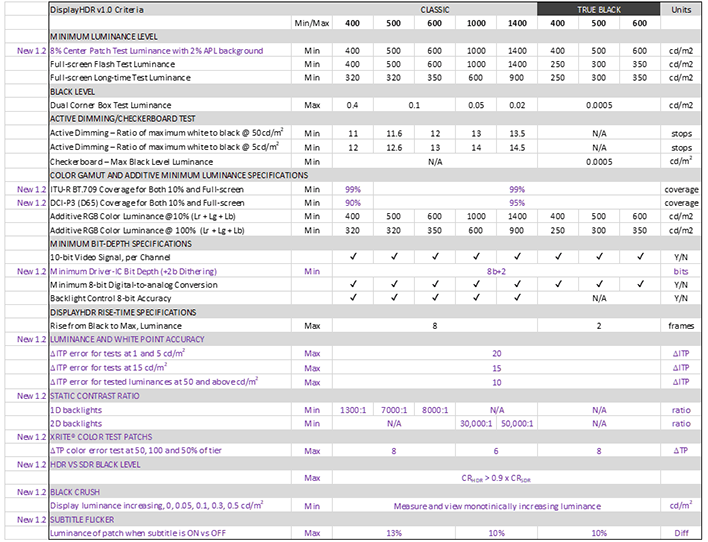VESA Overhauls Lame DisplayHDR Spec For Better PC And Laptop HDR Experiences

It's been over a half a decade since the Video Electronics Standards Association (VESA) introduced a fully open standard specifying high dynamic range (HDR) called DisplayHDR. The idea was and remains to assure customers that the HDR display they're purchasing, be it a PC monitor or a laptop, meets a baseline of visual performance with an official certification. Now nearly seven years later, VESA has announced what it says is a "major update" to DisplayHDR with version 1.2.
One of the key aspects to various tiers of DisplayHDR is the minimum peak brightness measured in nits. This is reflected in the DisplayHDR name. For example, the baseline specification is DisplayHDR 400, which among other things, necessitates that display must be capable of hitting 400 nits or higher. Likewise, DisplayHDR 600 raises the minimum peak brightness to 600 nits, and so on.
None of these are changing with the DisplayHDR 1.2 specification. The floor still rests at DisplayHDR 400, meaning a PC monitor or laptop can still be certified even if the peak brightness remains at a pedestrian 400 nits. However, VESA is overhauling the rest of the spec with "significantly tighter color gamut requirements for improved color accuracy."
"These include adding a DCI-P3 color gamut requirement for the DisplayHDR 400 tier, while also increasing the DCI-P3 requirement for the 500, 600, and 1000 tiers to bring them to parity with the 1400 tier. DisplayHDR 1.2 also synchronizes the color bit-depth requirement of the 400 tier with all performance levels to require a minimum of 8 bit + 2 bit dithering using frame rate control (FRC)," VESA explains.
There's quite a bit that's been added to the DisplayHDR 1.2 specification, including a bunch of new test requirements for things like black levels, the contrast ratio, color accuracy, and subtitle flicker. Notably, the updated spec applies brand new requirements for DisplayHDR 400, the entry-level certification into HDR territory, such as a minimum 1,300:1 static contrast ratio and 90% coverage of the DCI-P3 color space.
In the absence of eliminating 400 nits as the floor for something higher, the hope is that the updated requirements will result in more worthwhile HDR experiences for DisplayHDR 400 panels. If we're being frank, 400 nits under the old specification just didn't cut it. We'll have to wait and see if the tighter requirements beyond the minimum peak brightness can compensate for what's been a lame floor up to this point.
"HDR is rapidly becoming a key feature, especially for gaming," said Greg Staten, Distinguished Technologist for Color at HP (a VESA member) and VESA board member. "With the VESA DisplayHDR 1.2 release we continue to raise the quality and accuracy bar ensuring that customers can trust the quality of displays carrying the VESA DisplayHDR logo."
This also means it will take some additional research on the part of consumers, as VESA will continue to certify displays under the DisplayHDR 1.1 specification through the end of May 2025 for monitors, and May 2026 for laptops, before going all-in with DisplayHDR 1.2. That's a bit of a bummer, though VESA wants to be fair to manufacturers who already have products in development based on the DisplayHDR 1.1 spec.


